Penile Ring Entrapment and Strangulation: A Case Report and Review of the Literature
by Oluwaseun Samuel Alaba1, Emmanuel Abayomi Animashaun1, Adebola Damola-Okesiji2, Olukayode Azeez Oseni1*, Kehinde Habeeb Tijani2, Rufus Wale Ojewola2, Ogbonnia Sixtus Osi1, Vincent Iruegbukpe1, Hykmat Abimbola Ogunbadejo2
1Department of Surgery Urology Unit, Lagos University Teaching Hospital, Lagos, Nigeria
2Department of Surgery, College of Medicine, University of Lagos, Lagos, Nigeria
Received Date: 11 August 2025
Accepted Date: 18 August 2025
Published Date: 20 August 2025
Alaba OS, Animashaun EA, Damola-Okesiji A, Oseni OA, Tijani KH, et al. (2025) Penile Ring Entrapment and Strangulation: A Case Report and Review of the Literature J Surg 10: 11416 https://doi.org/10.29011/2575-9760.011416
Introduction
Penile entrapment is an uncommon but potentially devastating condition that can lead to strangulation, ischemia, necrosis, and permanent loss of the penis if not treated promptly [1]. Various objects, such as rings, bottlenecks, and constriction bands, have been reported as causes of penile entrapment [1]. Irrespective of the material used, constriction should not exceed 30 minutes [2]. Penile rings are devices used to sustain erections by reducing the outflow of blood from the cavernosal tissue, thereby enhancing sexual pleasure [2]. It has been associated with the management of cases of erectile dysfunction [3]. If left in place for more than 30 minutes without urgent intervention, they can cause severe swelling, urethral fistula, gangrene, and even complete loss of the distal penis [2]. This condition begins as penile ring entrapment, and if left untreated progresses to penile strangulation [2]. The degree of entrapment and the extent of distal edema it causes can make the release process challenging [4]. Non-metallic objects are generally easy to remove, whereas thick, hardened steel or iron can be tough to cut with a chisel, saw, or cutter [4]. Removal methods range from non-invasive approaches, such as lubrication and manual manipulation, to more advanced techniques involving cutting tools or, in severe cases, surgical intervention [2,4]. The choice depends on factors such as the type of constrictive device,
duration of entrapment, and extent of tissue damage [2]. Cutting is the most commonly used method of removal, despite the difficulty and danger of penile damage [5]. The management of such cases requires a multidisciplinary team approach, including urologists, emergency physicians, anesthetists, and, in some cases, mental health professionals. This case report describes the clinical presentation, management, challenges, and outcome of a 21-year-old man with a history of childhood sexual molestation and marijuana use, who presented with penile ring entrapment of 4 days duration.
Case Presentation
Patient Information: A 21-year-old single man, a telephone repair technician with a secondary level of education presented to the emergency department with complaints of severe pain, swelling, and discoloration of the penis for 4 days. The patient reported that he had placed a metallic ring around the base of his penis in an attempt to conceal it from bullies that would otherwise have taken it. Although he had a history of masturbation, he stated that the current incident was not intended to enhance sexual pleasure. He also reported no history of penetrative intercourse. Unable to remove the ring, he delayed seeking medical attention due to embarrassment and fear of judgment.
Medical History: The patient’s medical history was significant for childhood sexual molestation, which had left lasting psychological trauma. He also had a history of regular marijuana use, which he used as a coping mechanism for his supposedly stressful daily life.
Physical Examination
On examination, the patient was in significant distress. His vital signs were stable, but he exhibited signs of anxiety and discomfort. Examination of the genitalia revealed a metallic ring tightly encircling the base of the penis (Figures 1,2). The penis was swollen, shiny with dark discoloration, and cold to the touch, indicating compromised blood flow. There were no signs of active infection, but the patient reported severe pain and tenderness upon palpation.
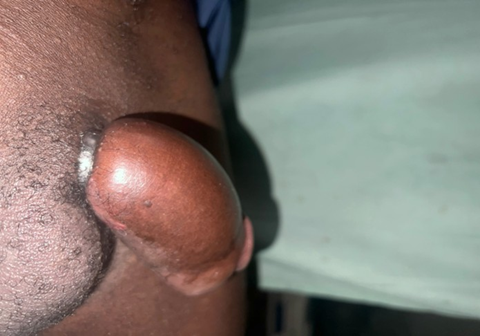
Figure 1: Patient at Presentation with a penile ring at the base of his penis.
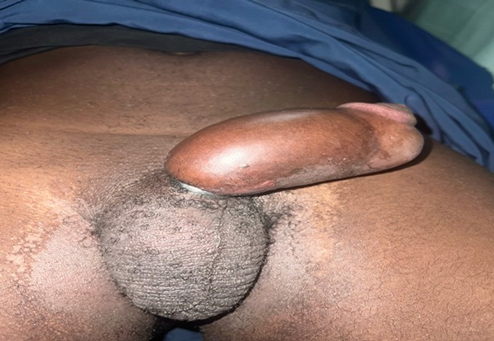
Figure 2: Patient at Presentation with a Penile ring at the base of the penis.
Diagnostic Workup: A Complete Blood Count (CBC), renal function tests, and viral markers were ordered to assess the patient’s overall health and fitness for anesthesia.
Findings
- CBC: Elevated white blood cell count, suggestive of a stress response.
- Renal function tests: Within normal limits.
- Viral markers: All normal.
Management: The patient was counseled on the critical nature of his condition and the need for immediate intervention to prevent irreversible damage. Informed consent was obtained, and the patient was taken to the operating room for ring removal under general anesthesia to minimize pain and anxiety. Although he was not in urinary retention, an indwelling urethral catheter was placed to help reduce or possibly identify any urethral injury following the attempt at removal of the entrapping ring.
Intervention: A multidisciplinary team consisting of urologists, anesthetists, nurses, and men from the engineering unit of the hospital were involved in his care.
- Lubrication and Manual Manipulation: Initial attempts to remove the ring using lubrication and manual manipulation were unsuccessful due to the tightness of the ring and the significant swelling.
- Protection of Surrounding Tissue: A Bard-parker was placed between the ring and the penile skin to protect the underlying tissue during the cutting process. The procedure was performed under continuous water irrigation to dissipate heat.
- Cutting off ring: An electronically powered angle grinder was chosen for its precision and ability to minimize thermal injury to the surrounding tissues (Figure 3).
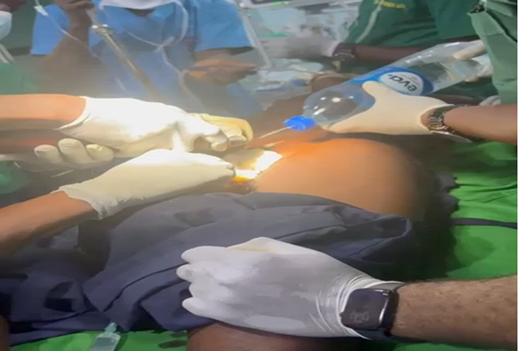
Figure 3a: Cutting off the ring with the electrically powered angle grinder.
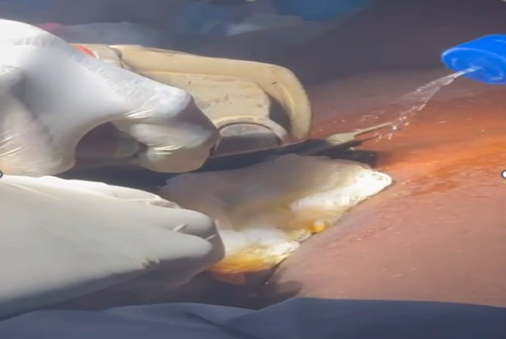
Figure 3b: Cutting off the ring with the electrically powered angled grinder.
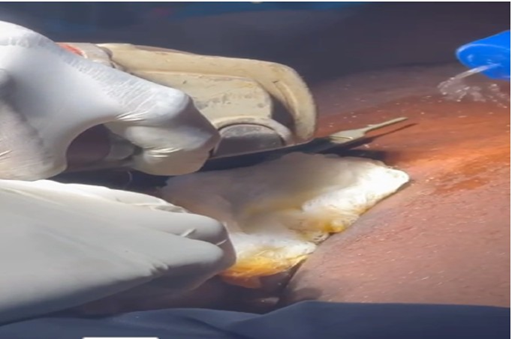
Figure 3c: Cutting off the ring with the electrically powered angled grinder.
The ring was carefully cut and divided into two halves, allowing for its removal with minimal skin abrasion (Figure 4). The procedure lasted approximately 20 minutes.
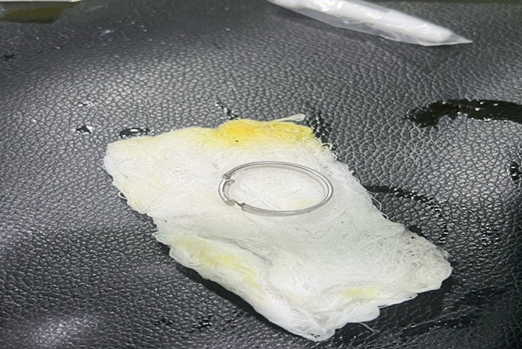
Figure 4a: Extracted metallic ring.
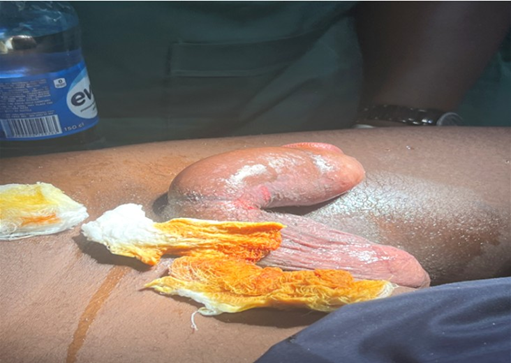
Figure 4b: On table post ring extraction.
Postoperative Care: After successfully removing the ring, the patient was monitored in the recovery room for any immediate complications. Intravenous antibiotics were administered prophylactically to prevent infection. The patient was also given analgesics to manage postoperative pain.
• Immediate Outcome
The patient experienced immediate relief from pain following the removal of the ring. Post-operative physical examination revealed a marked reduction in swelling and improvement in penile color and warmth, indicating restored blood flow. No signs of necrosis or severe tissue damage were observed (Figure 5).
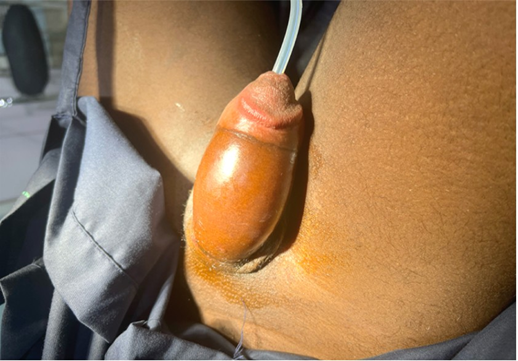
Figure 5a: Showing Penile Shaft on postoperative day one.
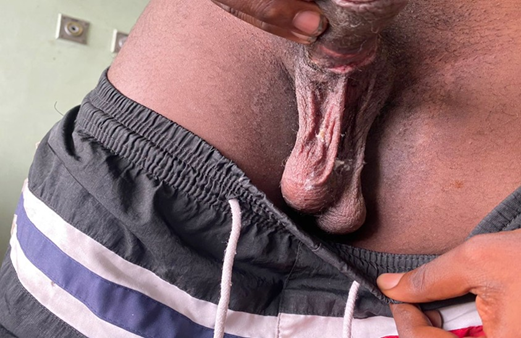
Figure 5b: Showing Penile shaft on postoperative day two.
• Psychological Support
Given the patient’s history of childhood sexual molestation and psychological trauma, he was evaluated by a psychiatrist.
Follow-Up: The patient was discharged with instructions to avoid any constrictive devices and to maintain proper hygiene. A followup appointment was scheduled for one week after discharge to assess healing and address any further concerns. However, he was lost to follow-up as he did not return for further urological or psychological care.
Discussion
Penile entrapment is a rare urological emergency that typically results from the placement of constrictive devices around the penis, often driven by sexual curiosity or attempts to enhance sexual pleasure [2]. In some cases, underlying psychological distress may contribute to the behavior. In this case, the patient’s actions were likely influenced by his history of childhood sexual molestation and ongoing psychological distress, with no sexual motivation. He wore the ring for four days, exceeding the 72-hour threshold identified in studies as the point where significant complications such as pressure necrosis, urethral fistula, penile gangrene, and stricture become more likely [5]. He had a swollen, shiny, and tender penis at presentation with signs of vascular compromise. Based on the classification by Bhat et al, this case was categorized as Grade 1, indicating mild injury without tissue loss [4]. Early recognition and timely intervention are crucial to minimizing these risks and preventing progression to more severe grades which may require extensive surgical intervention. Multiple treatment approaches have been reported with surgeons using different techniques based on device type, duration, available resources, and experience (Table 1) [2].
Reference | Age (years) | Description of penis | Duration and ring material | Treatment method |
Our patient | 21 | Swollen, shiny and tender. | 4 days, metallic ring | Cutting method with electrically powered angled grinder. |
Omisanjo, et al. [6] | 30 | Penile shaft swelling with suprapubic pain and swelling | 22hr, metallic ring | Cutting method with a power-driven saw. |
Dawood, et al. [2] | 28 | Penis, Edema, and bruise | 12hr, metal | A diamond tip Midas drill cut the ring. |
Dawood, et al. [2] | 60 | Penis and scrotum, with edema | 2 days, Metal | Olive oil was applied and the ring slid off |
Sawant, et al. [7] | 23 | Penis, with distal edema and circumferential ulcer | 24hr, rubber | Band was cut |
Nuhu, et al. [8] | 60 | Penis, complete penile gangrene | 1 day, metal nut | Cystostomy and penile amputation with perineal urethrostomy |
Agu, et al. [9] | 26 | The penile shaft was oedematous, mildly tender, cold, sensate, and engorged. | 23hr, stainless steel ring | The penile shaft was made slippery with Savlon and advanced while sliding. |
Noegroho, et al. [4] | 26 | Swelling of penis distal to the ring and obvious strangulation. | 1-month, metallic ring | Angled grinder |
Table 1: Summary of Case reports on Penile ring entrapment.
Managing penile strangulation requires a multidisciplinary approach and careful selection of the most appropriate removal technique with the primary aim being the restoration of penile circulation [4]. In our case, an electrically powered angle grinder was used for removal, as manual techniques were ineffective. While tools like hacksaws, Gigli saws, and angle grinders pose risks due to limited operating space and potential heat buildup, continuous irrigation was applied to prevent thermal injury and ensure a safe procedure [5]. Our patient did not have any additional injury. In a similar study by Omisanjo et al., ice packs were applied for cooling, and artery forceps were used for insulation before a power-driven saw was employed for removal [6]. In another study by Noegroho et al., an angle grinder was used with continuous water irrigation, but the patient sustained a laceration that required primary suturing [4]. Beyond physical management, addressing the underlying psychological distress is crucial, as individuals with a history of sexual trauma may engage in risky behaviors, including the use of constrictive devices. Incorporating mental health support into post-treatment care can help prevent recurrence and promote overall well-being.
Conclusion
This case highlights the importance of prompt intervention in cases of penile entrapment to prevent severe complications. A multidisciplinary approach involving urologists, emergency physicians, and mental health professionals is crucial for successful management. Treatment is based on the severity of the presentation. Additionally, addressing the psychological aspects of the patient’s condition is essential for long-term recovery and prevention of recurrence. Early recognition, appropriate intervention, and comprehensive postoperative care are key to ensuring positive outcomes in cases of penile entrapment.
References
- Sarkar D, Gupta S, Maiti K, Jain P, Pal DK (2019) Penile strangulation by different objects and its removal by the modified string method: Management of four cases with review of literature. Urol Ann 11: 1-5.
- Dawood O, Tabibi S, Fiuk J, Patel N, El-Zawahry A (2020) Penile ring entrapment-A true urologic emergency: Grading, approach, and management. Urology Annals 12: 15-18.
- Kyomukama LA, Ssebuufu R, Wani SA, Waziri MA, Lule H (2021) Penile ring entrapment and strangulation: A case report at Kampala International University Teaching Hospital in Western Uganda. International Journal of Surgery Case Reports 80: 104982.
- Noegroho BS, Siregar S, Ramdhani R, Partogu B, Mustafa A (2021) Penile strangulation injury by metallic ring: A study of 4 cases. International Journal of Surgery Case Reports 80: 105609.
- Zeid M, Sayedin H, Nabi N, Abdelrahman M, Jacob PT (2022) Penile Entrapment With Thick Penile Ring: A Case Report and Literature Review. Cureus [Internet] 14: e21034.
- Omisanjo OA, Ojewuyi O, Abolarinwa A, Akinola O, Omorinde M, et al. (2018) The Fire Service for the Removal of a Metallic Penile Constricting Device: A Ready Help When All Else Fail. Case Reports in Urology 2018: 7543451.
- Sawant AS, Patil SR, Kumar V, Kasat GV (2016) Penile constriction injury: An experience of four cases. Urology Annals 8: 512-515.
- Nuhu A, Edino ST, Agbese GO, Kallamu M (2009) Penile Gangrene due to Strangulation by a Metallic Nut: A Case Report. West African report of a non-surgical extrication method. International Journal of Journal of Medicine 28: 340-342.
- Agu TC, Obiechina N (2016) Post coital penile ring entrapment: A Surgery Case Reports 18: 15-17.
© by the Authors & Gavin Publishers. This is an Open Access Journal Article Published Under Attribution-Share Alike CC BY-SA: Creative Commons Attribution-Share Alike 4.0 International License. Read More About Open Access Policy.